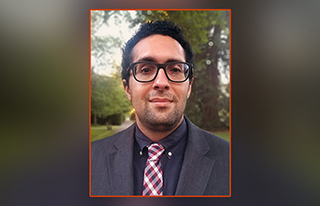
The enrollment rate shows how education is progressing in the primary years of primary schooling in developing countries. The enrollment rate has increased by more than 45% and dropped out rates have significantly declined, from 61% down to 16% between 1976 and 2020. Some education policies have been very successful. Others have not. This study introduces a framework for progress evaluation in order to measure progress made by developing countries in primary education.
Interdisciplinarity Training
Interdisciplinary training can prove beneficial to primary teachers. This approach supports the integration of knowledge and skill from various disciplines and allows students to develop professional creativity. The process can include answering difficult questions, investigating issues and solving them, and bringing different perspectives to the table. There are many methods to incorporate interdisciplinary perspectives into the classroom.
With existing funding mechanisms, it is possible to implement interdisciplinary training. It is difficult to assess the effectiveness and efficiency of such programs. The outcomes data for interdisciplinary training programs are very limited. This problem isn't unique to interdisciplinary training.

Common core competencies
Teachers who wish to help children in their early years develop the skills necessary to succeed in school, work, and at home can use the common core competencies in primary teaching. While there are differences in the national and state-level core competencies there is some commonality. These guidelines are useful for educators who want to create professional development plans.
This framework was the result of extensive research on teaching methods. It was created to help teachers identify and prioritize the essential teaching and learning skills. It also offers tips for teaching and assessing transferable skills. The framework is available under the Creative Commons Attribution-NonCommercial-ShareAlike 4.0 International License.
Curriculum
The Ministry of Education, Culture and Sport, (MECS), is responsible for managing all educational institutions in the country as well as overseas. It also sets the goals and regulates the curriculum. These objectives define what students should learn and be able do at the conclusion of their education. The curriculum describes the skills that students need to be able to apply each stage's content and solve complex problems.
The Spanish curriculum for primary education must be followed. It does not contain specific Social Science aims. It also contains "General Objectives for Primary Education” and "Evaluation Criteria." These standards are well-constructed and easily measurable. Teachers are required by law to assess the standards at the end of each lesson. This reduces the flexibility of education as well as its ability to adapt to new technologies.

Framework for learning
The Framework for Learning in Primary Education will help you to develop the skills that your students need in order to succeed in school. Every stage of the learning process builds on each other. The framework includes tools to help evaluate and assess your progress, as well as the steps and stages.
Frameworks are a critical part of the teaching and learning process, as they allow educators to align curriculum goals and activities to meet those goals. They are also useful in helping teachers to create learning environments and incorporate assessment into lessons. A good framework demonstrates how teachers can be united around a common vision. It also makes it easy to communicate this shared vision to parents.
FAQ
What do you need to become a teacher in early childhood?
It is important to decide whether you want to enter early childhood education. First, you need to obtain your bachelor's. Some states require students to earn a master's degree.
You will likely also have to attend classes in the summer months. These courses include topics like pedagogy (the art and science of teaching) or curriculum development.
Many colleges offer associate programs that lead to teaching certifications.
Some schools offer certificates and bachelor's degrees in early education. Other schools only offer diplomas.
There may not be any need for additional training if your goal is to teach from home.
What is the main difference between schooling and college?
Schools are organized by grades or classes. Each teacher teaches a particular class. Colleges are larger organizations that offer more specialized programs and often include university-level courses. Schools usually focus on basic subjects while colleges may offer a variety of subjects including arts, science, languages, business, etc. Both levels of education are designed to prepare students for higher-level study.
What is a vocational college?
Vocational schools offer programs for those who are interested in a particular occupation. These schools may offer general education and training in the skills required by employers.
Because it helps young people to develop the skills that they need for success in life, vocational education is an integral part of society. It ensures that all students have access to high-quality learning opportunities.
A vocational school provides a variety options for its students. They can choose from certificates, diplomas or degrees as well as apprenticeships, certificates, diplomas or degrees. Vocational schools teach academic and practical subjects, such as math, science, English, social studies, art, music, physical education, computer technology, business, health care, and others.
How do I select my major?
Students choose their majors by their interests. Some students prefer to choose a subject they like because it's easier than other subjects. Others wish to pursue a career that is not available. Still, others choose a major because they hope to earn money during their studies. No matter your reasons for choosing a major, you should consider the type of job that you might be interested in after you graduate.
There are many methods to learn more about the different fields of study. You could talk to someone in your family or friends about their experiences in these areas. Look through newspapers and magazines to find out what careers are available. Ask your guidance counselors at your high school for information about possible careers. Visit Career Services in your local library. Your local library has books on a variety of topics. Use the Internet to find websites related to particular careers.
What is the difference in a university and college?
A university can be described as an academic institution that offers higher education. It offers undergraduate and postgraduate courses in various fields.
A college is usually smaller than a university and has a lower reputation. It might offer fewer courses, but it will often have its own specialist areas.
What are the differences between early childhood education?
There are many ways that early childhood education can be described. These are the most popular:
-
Preschool - Children ages 2 to 5
-
PreKindergarten- Children from 4-6 years of age
-
Head Start/ Headstart - Children ages 0 to 3
-
Day Care/ Daycares: Children 0-5
-
Child Care Centres - Children from 0-18 Years
-
Family Childcare - Children between 0 and 12 Years Old
-
Homeschooling - Children from KG to 16
How do I apply to college?
There are many ways to apply for college. You can get started by contacting your high school guidance counselor or admissions representative. Many high schools now use online applications. You can also contact local colleges directly. Most colleges will accept applications over the Internet through their website.
If you choose to apply via mail, fill out the application. You will also need to write a personal story and attach copies of all documents. You can use the personal statement to tell why you would like to study at this school and what its benefits are to you. It also helps the admissions committee understand your goals and motivations.
You can download sample essays from this website.
Statistics
- These institutions can vary according to different contexts.[83] (en.wikipedia.org)
- Think of the rhetorical power of nineteenth-century abolitionist Harriet Beecher Stowe, Martin Luther King, Jr., or Occupy Wall Street activists with their rallying cry of “we are the 99 percent.” (bostonreview.net)
- Data from the Department of Education reveal that, among 2008 college graduates, 92.8 percent of humanities majors have voted at least once since finishing school. (bostonreview.net)
- And, within ten years of graduation, 44.1 percent of 1993 humanities graduates had written to public officials, compared to 30.1 percent of STEM majors. (bostonreview.net)
- Globally, in 2008, around 89% of children aged six to twelve were enrolled in primary education, and this proportion was rising. (en.wikipedia.org)
External Links
How To
How do you apply for scholarships?
Apply for scholarship funding first. The criteria that you must meet to qualify for a scholarship are listed below.
If you are financially disadvantaged, you may be eligible for a grant. You can qualify for a work-study program if you are enrolled in a vocational training course. A grant can also be granted if you are part of a minority community.
Once you have decided if you are eligible, you can begin applying.
Online, in-person, or by phone, you can apply. The type of scholarship will determine the application process.
You may be required to write essays on yourself and the reasons you are applying for scholarships. Others may ask questions such as, "Why did your choose this major?"
You must fill out an application for scholarships and attach supporting materials.
Your scholarship provider will review the information you provide. You will be notified by email or postal mail if you are selected.
You might be eligible for another scholarship even though you are not chosen. Contact your scholarship provider for details.